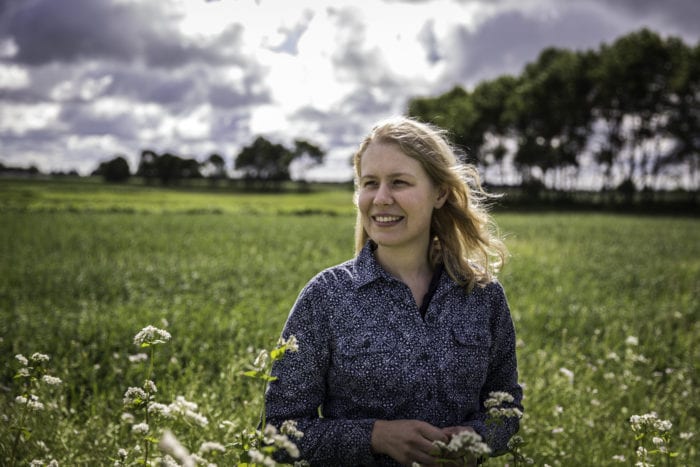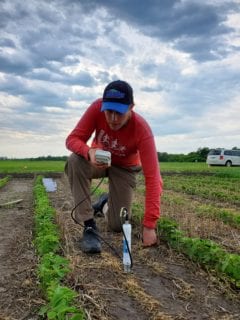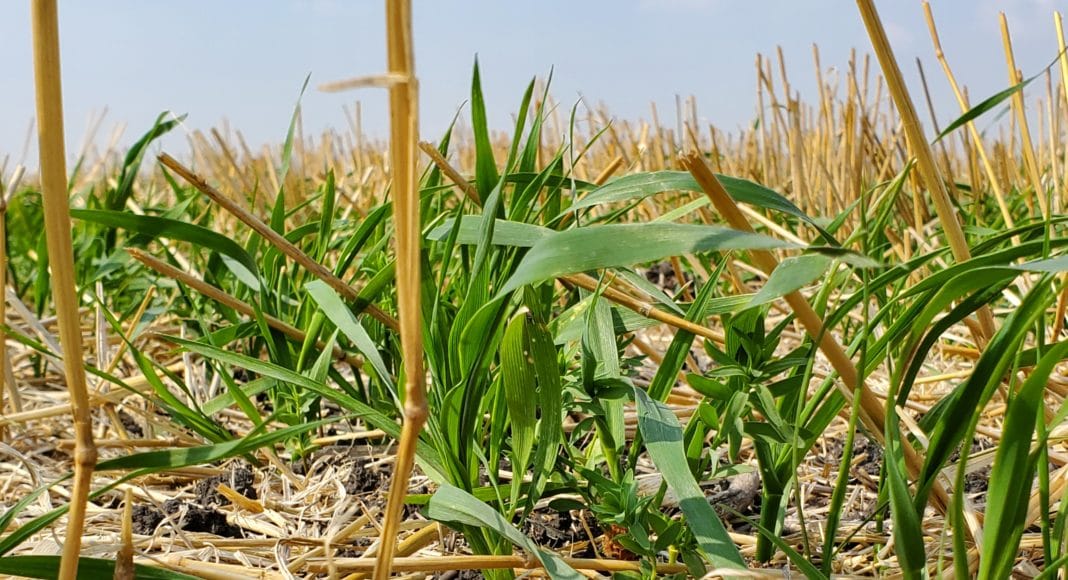A PhD student in Manitoba is surveying growers about a relatively new crop on the Canadian Prairies — cover crops.
For Callum Morrison, his interest in cover crops and the Canadian Prairies was the result of his travels and schooling.
Morrison was working on his undergraduate thesis at the University of Arkansas as part of a summer exchange program from his university in Scotland. While in the United States he travelled to Minneapolis, Minn. to visit a pen pal, and the two then decided to travel to Fargo, N.D. and ventured across the border to Winkler, Man. to attend the town’s harvest festival.
Morrison made connections with the southern Manitoba ag community at the festival and found himself drawn to the area. He returned a month later for harvest and then again on a work visa. When time came for him to decide on where to complete his post graduate degree, he once again found himself drawn to the Canadian province.
Through research he stumbled upon Yvonne Lawley’s work on cover crops. Lawley, a professor at the University of Manitoba, had completed her own PhD on radish cover crops at the University of Maryland, and had recently started researching cover crops on the Canadian Prairies.
“I was excited by the work experience he’d had in Manitoba and that he had gotten to know agriculture in Manitoba, and I thought he’d be a great student. I was eager to take him on,” Lawley says in a phone interview.

For Morrison, this was the opportunity he had been looking for, so the Scot packed his bags and came to Canada to start his research into cover crops, and along the way found his research pivoting to survey farmers.
“We don’t know everything there is to know yet about cover crops in the Prairies. This is somewhere I can learn about something which could have a lasting impact on Canadian soil,” Morrison explains in a phone interview.
Pandemic Pivot
Initially Morrison was focusing his research on cover crop field trials. He had five sites across Manitoba, Saskatchewan and Alberta. Each trial was focused on researching the benefits of cover crops for commercial crops in the area, including a potato field in Lethbridge, Alta.
Morrison had planned on spending the growing season travelling back and forth across the Prairies visiting his trials and completing tests on them, but then the global COVID-19 pandemic hit. In March 2020 as North America went into lockdown, Morrison found himself scrambling to keep his research work going.
However, his PhD project wasn’t just focused on the trial fields, there was also a farmer survey. As part of Lawley’s own research work, she had given Morrison a survey to do of farmers across the Prairies on their cover cropping experiences.
“I had been planning on doing the survey just as Callum was starting that fall. I drafted some questions and then very clumsily sort of made a paper form. I then realized that I needed to make an online form that farmers could fill out on their phone,” Lawley explains. “It became very apparent that a younger person who is more social media savvy was needed, and that is what Callum has brought to the project.”
As lockdown settled in, Morrison quickly pivoted his work to focus on reviewing the survey results from the first year, while still checking in with those minding his field plots across the Prairies.
“COVID was a bit of a mixed blessing for me, because it allowed me to go down this different angle and it’s been fantastic,” Morrison says. “I think as scientists, we need to realize that it’s very important to understand what farmers are actually doing on the ground.”
Survey Results
The first year of the survey, which was the 2019/2020 growing season, yielded answers from 211 farmers with about 50 per cent of them hailing from Manitoba, and 25 per cent each from Saskatchewan and Alberta.
“We have responses from literally dozens of farmers who grow dozens of different types of cash crops. We were all expecting annual grains to be at the top, but then all of the sudden, we’re having far more niche crops,” Morrison says.
Potatoes were listed as the 10th most commonly grown cash crop before a cover a crop, with nine respondents from Manitoba and Alberta being potato growers. All respondents who grew potatoes as a cash crop grew a shorter season cover crop, with 56 per cent growing a full season cover crop, the survey results note.

The survey results also found all potato growers had previously grown cover crops before with 56 per cent having grown them for three to five years and 44 per cent for more than five years.
“It appears potato farmers have been growing cover crops for a lot longer than other farmers. Every single potato farmer who responded had grown cover crops before,” Morrison explains. “When you compare that to all the Prairie cover crop growers, it’s a stark contrast.”
It was found from the survey that all potato growers who responded grew cover crops for erosion control, 89 per cent grew them to build soil health, 78 per cent to keep roots in the soil and 78 per cent for weed suppression. The most common cover crops grown by potato growers were fall rye at 78 per cent, radish at 78 per cent, oats at 67 per cent and peas at 44 per cent.
“Next year hopefully we’ll get some more survey respondents from major potato growing regions in Alberta, and Manitoba. It is my hope that we can significantly increase the number of potato farmers taking part in the survey. I think my results from the first year are great for a first try,” Morrison says.
Survey Highlights
- 211 farmers responded to the 2019 Prairie Cover Crop Survey
- Approximately 50 per cent of respondents were from Manitoba, and 25 per cent each from Saskatchewan and Alberta
- A total of 83,467 acres of cover crops were grown
- 83 per cent of cover crop area planted by potato growers were shorter season cover crops, with the remaining 17 per cent full season
- Most common farm types of potatoes growers were annual grain at 100 per cent, conventional till at 89 per cent, and perennial crops at 67 per cent
- 56 per cent of cover crops sown by potato growers were sown using an air seeder, disk drill or planter and the remaining, and 38 per cent were broadcast
- Most potato growers planted a mixture of cover crops at 75 per cent, 58 per cent seeded two to five species in their cover crop, and 17 per cent planted six to 10 species
Future Plans
The research work is currently in the second year of a three-year study. Morrison is collecting survey responses for this year until Feb. 1 and plans to launch the final survey of his project next fall.
This year, Morrison is hoping to increase the number of respondents who grow potatoes and the total number of survey respondents overall. The survey is a first of its kind for the Canadian Prairies, however when Morrison compared his survey sample size to that of the major American survey run by Sustainable Agriculture Research and Education (SARE), he found his had a higher respondent percentage.
Although Morrison’s work is showing him Western Canada is lagging on cover cropping compared to counterparts in the U.S. Midwest and the Maritime provinces such as Prince Edward Island.
“I feel that internationally, the Prairies might still be a bit behind. And I think part of that is also because perhaps you have a shorter window when you can grow cover crops up here,” Morrison explains.
Morrison does expect cover crops could continue to grow in interest on the Prairies. As part of his survey questions this year, he is asking farmers if their old cropping system worked better.
“Not one (so far) has said that their old system worked better. And some of these have maybe only grown cover crops for the first time this year,” Morrison says.
For more information on the cover crop survey, including to fill it out, visit: https://sites.google.com/view/prairiecovercropsurvey/home











